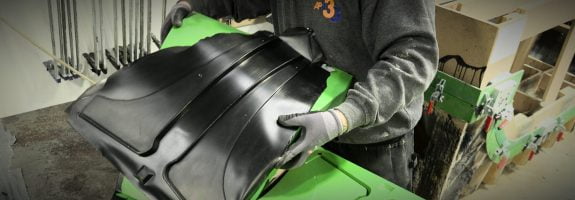
Due to the relatively low pressure and temperature involved in the RIM PU Moulding process, moulds can be made from either aluminium or resin model board. Material choice depends largely on the required life of the mould and the complexity of the component to be moulded. For production of 10,000+ mouldings and parts with intricate detail, aluminium moulds are recommended, and cost considerably less than the equivalent injection moulding tools. For lower volumes, mould tools are manufactured from a stable, dense Polyurethane Model Board.
The process involves filling the tool cavity with a quick-curing exothermic Polyurethane material under low pressure, allowing the material to cure and removing the moulded part from the tool. After de-flashing and trimming the components can be painted if required.
With an extensive range of resins available we can match our clients aesthetic and functional requirements including the moulding in of any fasteners, bushes or fixings. We can simulate most production thermoplastic materials used in injection moulding for both prototype and production applications, (ABS, PP, High Temp Materials and more).
During the RIM PU Moulding process, pressure builds inside the mould. To enable this pressure to release, and for air to expel, all bosses and upstands must be connected by webs to the split line and at least one part of the split line must be at the very top of the mould. The mould can be tilted to assist this. With a component comprising both thick and thin sections, it is important that the material flows through the thin section first, to avoid air traps.
Optimum surface finish is achieved on the lower face of the moulding. Where possible, components should be designed with cosmetic exterior faces at the bottom of the mould and the split line above.
Inserts can be moulded in with a high degree of accuracy and repeatability, and can dramatically reduce assembly costs at later production stages. Inserts can be used either for fastening or reinforcement purposes.
Sharp corners can trap air bubbles during the moulding processes, therefore components should be designed with a minimum of a 1mm radius on any corners or edges if possible.